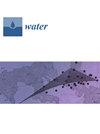微塑料对环境的影响以及选择可靠的关键生物监测器所面临的挑战
IF 3
3区 环境科学与生态学
Q2 ENVIRONMENTAL SCIENCES
引用次数: 0
摘要
微塑料(MPs)长期存在于环境中,对水生和陆地生态系统造成不利影响。微塑料在不同营养级中的积累主要取决于风化现象、微塑料尺寸的缩小以及生物利用率的提高;这最终导致生活在不同生态位中的生物摄入微塑料。现代人对 MPs 毒性的关注与目前缺乏标准化的可靠方法来评估不同栖息地生物接触 MPs 所带来的风险不谋而合。因此,在确定和选择用于 MPs 污染风险评估的适当生物监测器时,应侧重于确定易于实施的检测方法、可快速解释的结果(例如,基于 MPs 在其组织中的生物累积能力)和可标准化的方法。本综述分析了用于 MPs 评估的一些新兴生物监测物,并根据其作为不同环境中特定生物指标的潜在用途对其进行了选择和研究。研究重点包括:植物,作为空气传播的微纤维毒性评估的生物模型;贻贝,作为确定海洋环境中 MPs 累积的关键生物;陆地蜗牛,作为研究 MPs 对土壤影响的新兴生物。此外,最近的研究结果表明,微塑料会影响环境微生物群的组成,促进病原体生物膜的形成,导致水、土壤、食物、农作物和废物污染加剧。采用统一、有效的方法研究微塑料对环境的影响,并与前景广阔的机器学习工具相结合,可以为保护人类和动物健康的风险管理战略提供合理的支持。本文章由计算机程序翻译,如有差异,请以英文原文为准。
Microplastics’ Impact on the Environment and the Challenging Selection of Reliable Key Biomonitors
Microplastics (MPs) persist for long periods in the environment, causing adverse effects on aquatic and terrestrial ecosystems. The accumulation of MPs in various trophic levels mostly depends on weathering phenomena, their reduced dimensions and the improved bioavailability; this ultimately causes their ingestion by organisms living in different niches. The modern concern about MPs toxicity collides with the current unavailability of standardized and reliable methodologies to assess the risks associated with the exposure of organisms from different habitats. Hence, the identification and selection of appropriate biomonitors for MPs pollution risk assessment should focus on the identification of easy-to-implement assays, rapidly interpretable results (e.g., based on the MPs bioaccumulation capabilities in their tissues) and standardizable methodologies. The present review analyzed some emerging biomonitors exploited for MPs evaluation, selected and examined according to their potential use as specific biological indicators for diverse environments. The research was focused on plants, as biological models for airborne microfibers toxicity evaluation; mussels, as key organisms for the establishment of MPs accumulation in marine environments; land snails, representing emerging organisms selected for studies of MPs’ impact on soil. Furthermore, recent findings evidenced the influence of microplastics on the composition of environmental microbiota, enhancing pathogenic biofilms formation, leading to increased water, soil, food, crops and waste contamination. Disposing of harmonized and validated methods to study MPs’ impact on the environment, integrated with promising machine learning tools, might sensibly support the risk management strategies protecting human and animal health.
求助全文
通过发布文献求助,成功后即可免费获取论文全文。
去求助
来源期刊

Water
WATER RESOURCES-
CiteScore
5.80
自引率
14.70%
发文量
3491
审稿时长
19.85 days
期刊介绍:
Water (ISSN 2073-4441) is an international and cross-disciplinary scholarly journal covering all aspects of water including water science and technology, and the hydrology, ecology and management of water resources. It publishes regular research papers, critical reviews and short communications, and there is no restriction on the length of the papers. Our aim is to encourage scientists to publish their experimental and theoretical research in as much detail as possible. Full experimental and/or methodical details must be provided for research articles. Computed data or files regarding the full details of the experimental procedure, if unable to be published in a normal way, can be deposited as supplementary material.
 求助内容:
求助内容: 应助结果提醒方式:
应助结果提醒方式:


